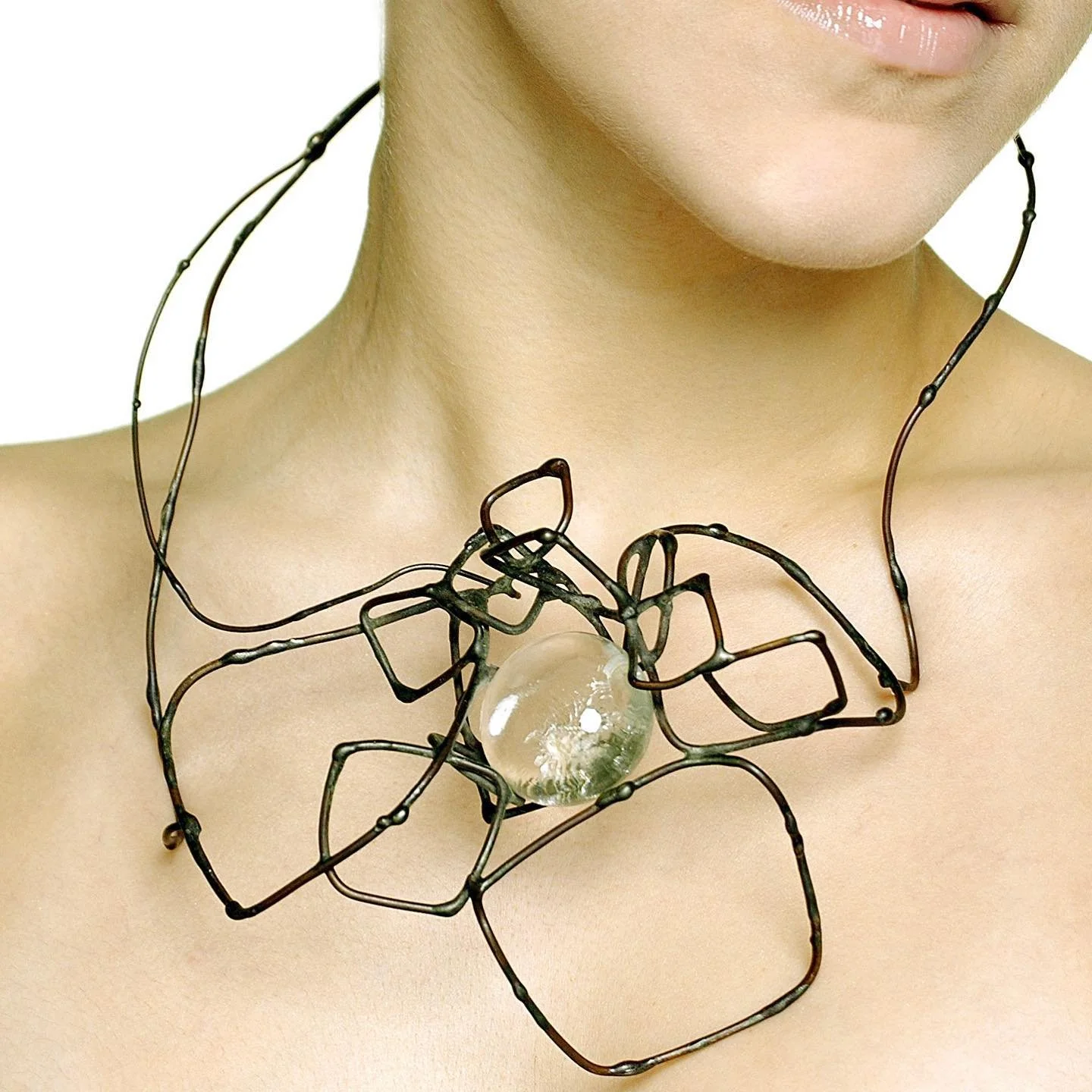
Claire Falkenstein: A Modernist Who Refused to Be Tamed
Claire Falkenstein was a woman who defied gravity—not only in the physical sense, but in the social, artistic, and historical senses as well. Born on July 22, 1908, in Coos Bay, Oregon, she grew up wild with wonder, riding horses along the beach in the dark and falling in love with science. That restless curiosity never left her. It lived in her hands, in her metal, in her fierce commitment to pushing form beyond its boundaries.
Falkenstein was a sculptor, a metalsmith, a painter, a printmaker, a jeweler, and a teacher. But more than any title, she was a force—untamed and unscripted. She forged new paths not just through material, but through ideology. She challenged the false hierarchy between fine art and craft, and refused to confine herself to one category. She didn’t need to “fit in”—she invented new spaces instead.
She began making jewelry in the 1940s as a way to bring her sculptures to the human body. It was never about decoration—it was about translation. Her works were extensions of her larger sculptures, explorations in space, line, and kinetic energy. She became a contemporary of Alexander Calder, but unlike Calder, Falkenstein's work rarely earned the spotlight it deserved. She didn’t court commercial success, and she didn’t settle in one place long enough to be pinned down by critics or curators. She was too busy making.
In post-WWII America, where women were expected to shrink or serve, Falkenstein expanded. Her art was radical not only for its formal innovation but for its refusal to ask permission. She worked in iron and glass, twisted copper, and shattered assumptions. Her wearable pieces were not subordinate to her sculptures—they were sculptures, intimate ones. Sculptures that moved with the body, that lived on skin.
And yet, she is often overlooked—her legacy scattered like her travels, her work under-documented, her name absent from too many textbooks. But absence does not equal insignificance. Falkenstein’s absence is a reflection of the systems that failed to see her, not the value of what she made.
Her life and work remind us that the boundaries between disciplines, like the boundaries placed on women, are meant to be broken. That art can be wild and free. That we do not need to choose between intellect and intuition, structure and spirit, body and object. We can have all of it.
She is a model for those who make without waiting for approval. For those who don’t ask if it’s art or craft or jewelry or sculpture. For those who simply begin, and keep going.
